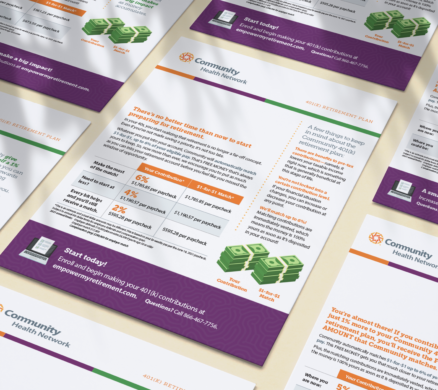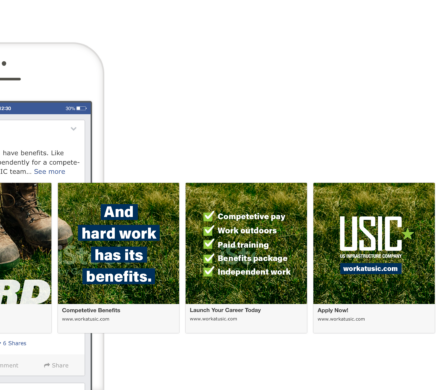
When your employees review their 401(k) statements, they’ll see a new feature: a lifetime income illustration. Companies are required to share this illustration at least once per year as part of the SECURE Act, but more importantly, it’s a way for employees to see if they’re on track for retirement.
With this new feature, HR and retirement plan specialists are faced with how to help employees understand what this illustration means–and how it applies to them. Given our experience in benefit and retirement plan communications, Westcomm has some ideas for how the lifetime income illustration can be used as a tool to gauge retirement savings, how you can talk with employees about it, and ways to encourage increased participation in their retirement benefits.
First step: Understanding the lifetime income illustration
The lifetime income illustration is an estimate of how much money an account holder might be able to withdraw from their 401(k) every month starting at age 67. It is based on the current account balance, so it does not factor in growth, new contributions, or other retirement income.
It’s important to communicate that this illustration isn’t a guarantee of money they will receive in retirement. Rather, it should be used as a rough guide, and is one piece of information that they can use when planning for retirement.
“Our goal is to help workers and retirees understand how savings translate to retirement income,” said Acting Assistant Secretary of Labor for the Employee Benefits Security Administration Jeanne Klinefelter Wilson in a news release.
“Defined contribution plan savings are meant to stretch across the years of retirement. When workers are reminded of what their balances could mean in terms of an estimated monthly dollar amount, they can use this information to plan both savings and spending,” Wilson said.
Key takeaway: The lifetime income illustration takes the current 401(k) account balance and converts it into an estimated monthly amount. This monthly amount can help employees visualize their monthly income during retirement in a more tangible way.
Limitations of the lifetime income illustration
The illustration makes a lot of assumptions in its estimate. It assumes the retiree:
- Will start to withdraw funds at age 67
- That the funds are converted to an annuity (showing potential outcomes of both a single life annuity, and a qualified joint and survivor annuity)
- That the interest rate of the annuity will be keyed to the 10-year constant maturity Treasury rate
But, the lifetime income illustration does not include all of an employee’s retirement accounts. It doesn’t factor in IRAs, employer-sponsored retirement accounts from previous employment, spousal earnings, or Social Security income. It also doesn’t factor in whether an employee is fully vested in the 401(k). And it doesn’t include future contributions, growth, or employer matches.
Key takeaway: The lifetime income illustration is a snapshot in time.
How to help employees understand the lifetime income illustration
Start by reviewing the information provided by your 401(k) plan provider. Likely, they’ll have specific guidelines for how to explain the lifetime income illustration with your employees.
If your benefit offerings include financial planning or other financial advice, remind your employees how they can take advantage of those services.
Your human resources department could also host a webinar explaining the lifetime income illustration and how to understand it, how to factor in other retirement account balances, and how to use that data to see if they’re on track for the retirement lifestyle they’re envisioning.
Key takeaway: This is a key opportunity to show you care about employees now and in the future. Use the tools available to you and consider providing information multiple ways (newsletters, video, webinars) to appeal to the various ways people like to consume information.
Encourage employees to make the most of their 401k match
This is also an ideal time to remind employees to take advantage of the full company 401(k) match. Encourage them to make annual increases to their retirement plan, and show them how even a small increase now will have a bigger result, thanks to the power of time and compound interest.
You should also highlight any retirement and financial well-being programs that are available. Remember, if you don’t discuss your company’s retirement plan in a way that helps employees understand its benefits, they will be less likely to use it to meet their long-term financial goals.
We have found that when employers use personalized data, they can have a stronger impact on employee participation in benefits like retirement plans. When you use data-driven, segmented data to drive your messaging, your information is more likely to have an impact on your employees. Also, be sure to avoid jargon and use easy-to-understand language in your approach.
Key takeaway: By using numbers and visuals to show your employees what can happen if they increase their 401(k) contributions, they can understand how taking action now will yield results in retirement.
Want to dive deeper? Check out our blog about the four things we do at Westcomm to ensure retirement communications hit the mark for our clients.
Want to chat? Reach out at helloindy@westcomm.com or follow us @westcomm on LinkedIn for more insights.





